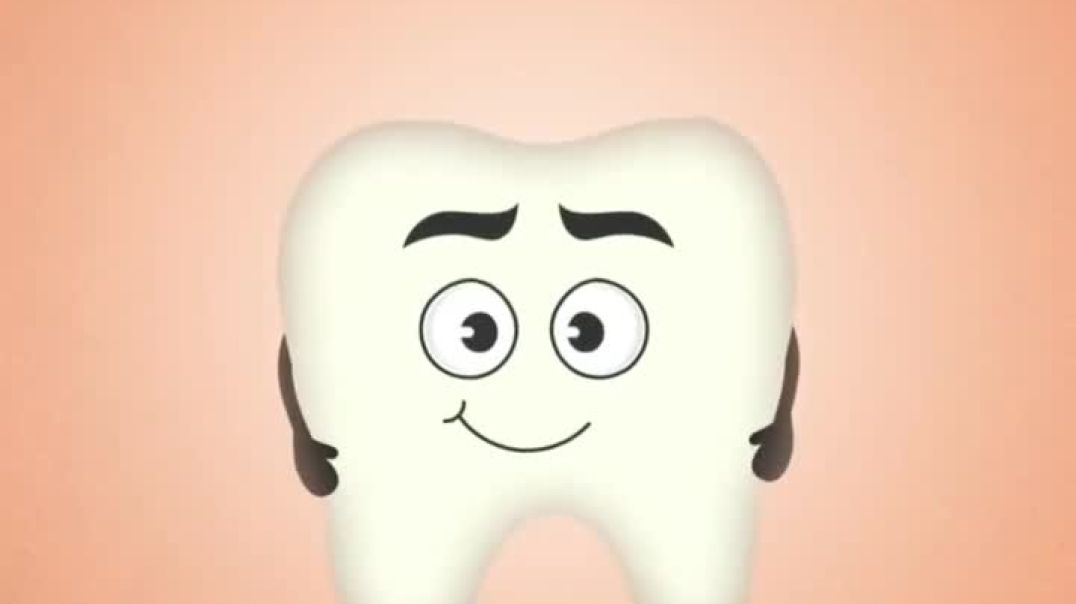Top videos
An estimated 900,000 knee replacements are performed in the U.S. every year, but experts say about 15% of patients aren’t totally pleased with the outcome. An advancement in technology is focused on improving those outcomes.
Knee replacement involves replacing a knee joint that has been damaged or worn away, usually by arthritis or injury. Find out more here: https://www.bupa.co.uk/health-....information/knee-cli
Many U.S. hospitals still perform traditional surgery, over minimally invasive procedures, according to Johns Hopkins University researchers. Also, a new study on HPV vaccines. Wendy Gillette reports on the day's top health stories.
Gastric bypass, also called Roux-en-Y gastric bypass surgery, is considered a “metabolic” procedure because it changes how your body absorbs fat, calories and nutrients. This metabolic change occurs because your gastrointestinal tract is altered when your gastric bypass surgeon attaches the smaller section of your stomach directly to your small intestine. As a result, your appetite changes and you feel full faster.
What to expect during the day of a pediatric surgery at Sutter Children's Center Sacramento.
Nursing skills lab procedure for wound care dressing change with irrigation and packing.
© 2023 Elsevier. All rights reserved. Histologically the cervix is different from the rest of the uterus and also has a mucosa that doesn’t shed during menstruation.
Find our full video library only on Osmosis Prime: http://osms.it/more.
Join over 3 million current & future clinicians who learn by Osmosis, and over 130 universities around the world who partner with us to make medical and health education more engaging and efficient. We have unparalleled tools and materials to prepare you to succeed in school, on board exams, and as a future clinician. Sign up for a free trial at http://osms.it/more. If you're interested in exploring an institutional partnership, visit osmosis.org/educators to request a personalized demo.
Follow us on social:
Facebook: http://osms.it/facebook
Twitter: http://osms.it/twitter
Instagram for med: http://osms.it/instagram
Instagram for nursing: https://osms.it/ignursing
Linkedin: https://osms.it/linkedin
Our Vision: Everyone who cares for someone will learn by Osmosis.
Our Mission: To empower the world’s clinicians and caregivers with the best learning experience possible. Learn more here: http://osms.it/mission
Medical disclaimer: Knowledge Diffusion Inc (DBA Osmosis) does not provide medical advice. Osmosis and the content available on Osmosis's properties (Osmosis.org, YouTube, and other channels) do not provide a diagnosis or other recommendation for treatment and are not a substitute for the professional judgment of a healthcare professional in diagnosis and treatment of any person or animal. The determination of the need for medical services and the types of healthcare to be provided to a patient are decisions that should be made only by a physician or other licensed health care provider. Always seek the advice of a physician or other qualified healthcare provider with any questions you have regarding a medical condition. © 2023 Elsevier. All rights reserved.
Brain tumor survivor Robert Alvarez and neurosurgeon Sujit Prabhu, M.D., explain why and how Robert played the guitar during his surgery for a grade II astrocytoma. It was the first time a brain tumor patient played a musical instrument during an awake craniotomy at MD Anderson.
Read Robert Alvarez's story: https://www.mdanderson.org/pub....lications/cancerwise
Learn about awake craniotomy for brain tumors: https://www.mdanderson.org/pub....lications/cancerwise
Request an appointment at MD Anderson by calling 1-877-632-6789 or online at: https://my.mdanderson.org/Requ....estAppointment?cmpid
Super P Force 160mg was designed to help men with erectile dysfunction and premature ejaculation, both common sensual problems.The two active ingredients, sildenafil citrate and dapoxetine, combined in the two products, assist men in achieving and maintaining a stronger erection while delaying ejaculation and extending sensual satisfaction. You can buy Super P Force 160 mg online. Re-building trust in one's sensual abilities is one of the largest benefits of Super P Force 160 mg for men. This can enhance relationships and overall well-being. Men can enjoy a more satisfying and pleasant sensual experience, enhancing intimacy and connection with their partner, by treating both premature ejaculation and erectile dysfunction. Moreover, Super P Force 160mg is a product that has been professionally established to assist men who are suffering from sensuality. It is effective and safe. Men have sufficient time to engage in sensual acts without losing their erection or too early ejaculations due to its simple application and up to 4-hour duration. In conclusion, Super P Force 160 mg is an excellent medication for men who want to have a more fulfilling sensual life and improve their sensual performance.Buy Super p Force 160mg online at our web store https://www.firstchoicemedss.c....om/super-p-force-160
Buy Kamagra 100mg is a potent medicine effectual in treating the condition of Erectile Dysfunction in men. The medicine contains an active substance of Purchase Sildenafil 100mg.
Buy Now : https://tinyurl.com/buy-kamagra-100-tablets
#rsmenterprises #health #healthcare #menshealth #kamagra100mg #edmedicine #sildenafil100mgn #genericviagra #maleviagra
Are you considering cosmetic surgery but worried about finding the right clinic? Do you long for a more youthful, toned, and shapely figure? If so, then you'll want to tune in to our latest video.
In her testimony, Johanna shares her experience of undergoing a breast lift, breast reduction, tummy tuck, and Brazilian butt lift with the skilled team at RG Aesthetics.
Johanna chose RG Aesthetics based on the team’s excellence, safety, and patient satisfaction. Through her honest and transparent storytelling, Johanna takes you along on her journey, detailing her experience of each procedure, the professional and compassionate care she received from our team, and the amazing results she achieved.
Beyond the physical changes, Johanna also shares how the team helped her overcome her fears and anxieties, providing her with the support and guidance she needed to make informed decisions and feel comfortable throughout the entire process.
Whether you're considering a breast lift, breast reduction, tummy tuck, Brazilian butt lift, or any other cosmetic procedure, this video offers an honest and informative account of what to expect from start to finish.
Watch Johanna's story and see for yourself the transformative power of cosmetic surgery.
00:00 Introduction
00:23 How did you decide to get your surgery done from us?
01:12: How was your experience with us.
02:15 When you come to India, you mentioned that in U.S the prices are outrageous.
03:00 What was your thought process when you saw your results for the first time.
03:41 Any message to people who contemplate cosmetic surgeries, but very apprehensive.
04:42 Any message to our team?
Also, don't forget to subscribe to us for more such videos!
Leave your comment below.
____________________________________________
About Dr. Rajat Gupta and RG Aesthetics
At RG Aesthetics, India’s best plastic surgeon, Dr. Rajat Gupta is at your service! With 13 years of experience, brand certification, and international recognition, Dr. Gupta is the solution to all your contouring needs.
His expertise in liposuction techniques combined with the state-of-the-art technology available at RG Aesthetics ensures we continue providing the most reliable services with incredible, instantaneous results!
Our equipment allows for every kind of liposuction there is – especially the minimally invasive kinds. Dr. Gupta reflects RG Aesthetics’ belief of the patient’s comfort always being paramount. Procedures at RG Aesthetics, under Dr. Rajat Gupta, minimize trauma and speed up recovery time for the best results!
#drrajatgupta #rgaesthetics #plasticsurgeon #plasticsurgeondelhi #cosmeticsurgery #plasticsugeryexperience #cosmeticsurgeryexperience #breastlift #breastreductionsurgery #tummytuck #brazilianbuttlift
Say goodbye to dental anxiety with Ayushman!
Our caring and experienced team is here to make your dental visit a comfortable and positive experience.
Book your appointment Today!
.
.
.
.
Call Us: - +91 73031 96663
Visit- https://www.ayushmandental.com
Email- info@ayushmandental.com
Address:- Plot No. 2, Sector -12, Ashirwad Chowk, H L Galleria Building, Second Floor, Dwarka, New Delhi - 110075.
A video showing arthrocentesis of the knee from Harvard medical school
Video-Assisted thoracoscopy
How To Save The Facial Nerve During Parotid Gland Surgery
كيفية منع تساقط الشعر و علاج الصلع
د. محمد الروبي
استشارى جراحات التجميل - جامعة عين شمس
The Knee Exam
Observation:
1. Make sure that both knees are fully exposed. The patient should be in either a gown or shorts. Rolled up pant legs do not provide good exposure!
2. Watch the patient walk. Do they limp or appear to be in pain? When standing, is there evidence of bowing (varus) or knock-kneed (valgus) deformity? There is a predilection for degenerative joint disease to affect the medical aspect of the knee, a common cause of bowing. Varus Knee Deformity, more marked on the left leg. 3. Make note of any scars or asymmetry. Chronic/progressive damage, as in degenerative joint disease, may lead to abnormal contours and appearance. Is there obvious swelling as would occur in an effusion? Redness suggesting inflammation? 4. Is there evidence of atrophy of the quadriceps, hamstring, or calf muscle groups? Knee problems/pain can limit the use of the affected leg, leading to wasting of the muscles.
While both legs have well developed musculature,
the left calf and hamstring are bulkier than the right. 5. Look at the external anatomy, noting structures above and below the knee itself: 1. Patella 2. Patellar tendon 3. Quadriceps/Hamstring/Calf muscles 4. Medial and lateral joint lines. 5. Femur and Tibia 6. Tibial tuberosity
Ballotment (helpful if the effusion is large) 1. Slightly flex the knee which is to be examined.
2. Place one hand on the supra-pateallar pouch, which is above the patella and communicates with the joint space. Gently push down and towards the patella, forcing any fluid to accumulate in the central part of the joint.
3. Gently push down on the patella with your thumb.
4. If there is a sizable effusion, the patella will feel as if it's floating and "bounce" back up when pushed down.
The complex circuitry interconnecting different areas in the brain, known collectively as white matter, is composed of millions of axons organized into fascicles and bundles. Upon macroscopic examination of sections of the brain, it is difficult to discern the orientation of the fibers. The same is true for conventional imaging modalities. However, recent advancements in magnetic resonance imaging (MRI) make such task possible in a live subject. By sensitizing an otherwise typical MRI sequence to the diffusion of water molecules it is possible to measure their diffusion coefficient in a given direction1. Normally, the axonal membrane and myelin sheaths pose barriers to the movement of water molecules and, thus, they diffuse preferentially along the axon2. Therefore, the direction of white matter bundles can be elucidated by determining the principal diffusivity of water. The three-dimensional representation of the diffusion coefficient can be given by a tensor and its mathematical decomposition provides the direction of the tracts3; this MRI technique is known as diffusion tensor imaging (DTI). By connecting the information acquired with DTI, three-dimensional depictions of white matter fascicles are obtained4. The virtual dissection of white matter bundles is rapidly becoming a valuable tool in clinical research.
Our journey begins with a transverse section of tightly packed axons as seen through light microscopy. Although represented as a two-dimensional "slice", we see that these axons in fact resemble tubes. A simulation of water molecules diffusing randomly inside the axons demonstrates how the membranes and myelin hinder their movement across them and shows the preferred diffusion direction --along the axons. The tracts depicted through DTI slowly blend in and we ride along with them. As we zoom out even more, we realize that it is a portion of the corpus callosum connecting the two sides of the brain we were traveling on and the great difference in relative scale of the individual axons becomes evident. The surface of the brain is then shown, as well as the rest of the white matter bundles--a big, apparently chaotic tangle of wires. Finally, the skin covers the brain.
With the exception of the simulated water molecules, all the data presented in the animation is obtained through microscopy and MRI. Computer algorithms for the extraction of the cerebral structures and a custom-built graphics engine make our journey through the brain's anatomy possible in a living person.
Micrograph courtesy of Dr. Christian Beaulieu, University of Alberta.
Music by Mario Mattioli.
References:
1. Stejskal, E.O., et al., J. Chem. Phys., 1965. 42:
2. Beaulieu, C., NMR Biomed., 2002. 15:435-55.
3. Basser, P.J., et al., J. Magn. Reson. B, 1994. 103:247-54.
4. Mori, S., et al., NMR Biomed., 2002. 15:468-80.
ENDOSCOPIC (NON-SURGICAL) REMOVAL OF MULTIPLE LARGE TUMORS FROM STOMACH IN A PATIENT WITH PEUTZ-JEGHERS SYNDROME
PEUTZ-JEGHERS SYNDROME: Peutz-Jeghers syndrome (PJS) is a familial syndrome consisting of mucocutaneous pigmentation, gastrointestinal polyposis and cancers of gut & other sites like breast, ovary, and testes. PJS has an autosomal dominant inheritance with variable and incomplete penetrance. Germline mutations of STK11/LKB1 gene on 19p cause this syndrome. Mucocutaneous pigmentation may be noted in early infancy. These deposits of melanin are most commonly found around the mouth, nose, lips, buccal mucosa, hands, and feet, and may also be present in perianal and genital areas. PJS polyps may be found in stomach, small intestine, or colon, but they tend to be prominent in the small intestine. These polyps may increase in size and cause small intestinal obstruction or intussusceptions that may occur in early infancy. Acute upper gastrointestinal bleeding and chronic faecal blood may complicate the disease.
PATIENT: The patient was a 25 yr male who had mucocutaneous pigmentation and multiple polyps in the stomach and duodenum. He presented with bleeding from gastric polyps. As the polyps in stomach were numerous, (more than 20 in number) and were large in size (some equal to small egg size), he had been advised to undergo surgery. Surgery planned was total gastrectomy.
PROCEDURE: The patient underwent video-endoscopy of the esophagus, stomach and duodenum. All polyps were examined for size and presence or absence of stalk. A plan to remove all the gastric polyps at endoscopy was made in the same sitting. He received light conscious sedation. Flat polyps were raised form the gastric wall by injection of saline in to polyp base to let these lesions have a stalk. This was done by needle injector. Each polyp was engaged in a snare and the polyp stalk was cut by coagulation cutting current. The cuts were clean without any bleeding. All polyps were recovered for histology. The histology revealed all polyps to be hamartomous lesions. None of the polyps were cancerous. Patient has been followed up for over one year and is doing fine without any further bleeding or pain.
Video shows the procedure of videoendoscpy and endoscopic removal of polyps.
Squared Notch




















